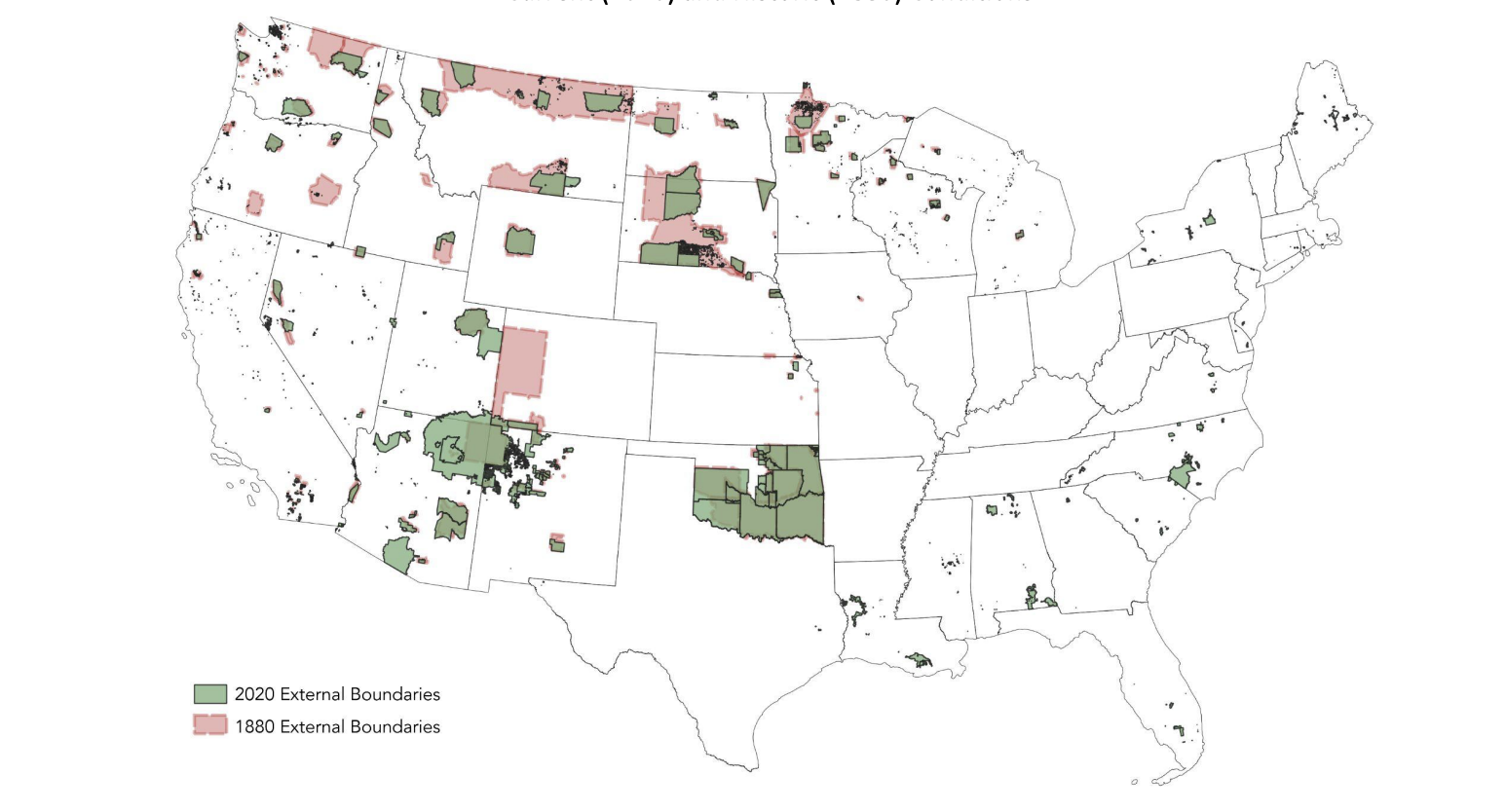
- Details
- By Native News Online Staff
Researchers from the Harvard Project on American Indian Economic Development published a policy brief on Oct. 20 detailing how geographic information system (GIS) techniques can be used in landback efforts across Indian Country.
The report notes that six federal agencies currently manage approximately one-third of the land surrounding reservations that formerly belonged to Native nations.
Using geographic information systems helped the authors identify public and/or protected lands in relation to current and historic reservation boundaries. Between 1889 and 1890, Congress ceded about 13 million acres of reservation land to settlers through the General Allotment Act which authorized the president to break up reservation land.
GIS can show the scope of landback opportunities, including lands that are: owned by the federal or state governments; federal-or state-managed within current external reservation boundaries; existing within former reservation boundaries; near or bordering current reservation land; or protected areas designated for conservation management.
“Identifying where these parcels are is a powerful first step for tribes and government agencies to begin to develop strategies for landback,” wrote authors Miriam Jorgensen, Harvard Project on American Indian Economic Development (Harvard Project) research director, and Laura Taylor, Harvard Project research fellow.
More Stories Like This
50 Years of Self-Determination: How a Landmark Act Empowered Tribal Sovereignty and Transformed Federal-Tribal RelationsNCAI Demands Tribal Consultation Before Transfer of Native Education Programs
Native Pride Productions Brings Tradition to Macy’s Parade in NYC
Navajo Nation President Nygren Files in Court to Halt Removal Legislation
Alcatraz Sunrise Gathering Marks 50 Years of Indigenous Activism
Help us tell the stories that could save Native languages and food traditions
At a critical moment for Indian Country, Native News Online is embarking on our most ambitious reporting project yet: "Cultivating Culture," a three-year investigation into two forces shaping Native community survival—food sovereignty and language revitalization.
The devastating impact of COVID-19 accelerated the loss of Native elders and with them, irreplaceable cultural knowledge. Yet across tribal communities, innovative leaders are fighting back, reclaiming traditional food systems and breathing new life into Native languages. These aren't just cultural preservation efforts—they're powerful pathways to community health, healing, and resilience.
Our dedicated reporting team will spend three years documenting these stories through on-the-ground reporting in 18 tribal communities, producing over 200 in-depth stories, 18 podcast episodes, and multimedia content that amplifies Indigenous voices. We'll show policymakers, funders, and allies how cultural restoration directly impacts physical and mental wellness while celebrating successful models of sovereignty and self-determination.
This isn't corporate media parachuting into Indian Country for a quick story. This is sustained, relationship-based journalism by Native reporters who understand these communities. It's "Warrior Journalism"—fearless reporting that serves the 5.5 million readers who depend on us for news that mainstream media often ignores.
We need your help right now. While we've secured partial funding, we're still $450,000 short of our three-year budget. Our immediate goal is $25,000 this month to keep this critical work moving forward—funding reporter salaries, travel to remote communities, photography, and the deep reporting these stories deserve.
Every dollar directly supports Indigenous journalists telling Indigenous stories. Whether it's $5 or $50, your contribution ensures these vital narratives of resilience, innovation, and hope don't disappear into silence.
 The stakes couldn't be higher. Native languages are being lost at an alarming rate. Food insecurity plagues many tribal communities. But solutions are emerging, and these stories need to be told.
The stakes couldn't be higher. Native languages are being lost at an alarming rate. Food insecurity plagues many tribal communities. But solutions are emerging, and these stories need to be told.
Support independent Native journalism. Fund the stories that matter.
Levi Rickert (Potawatomi), Editor & Publisher

